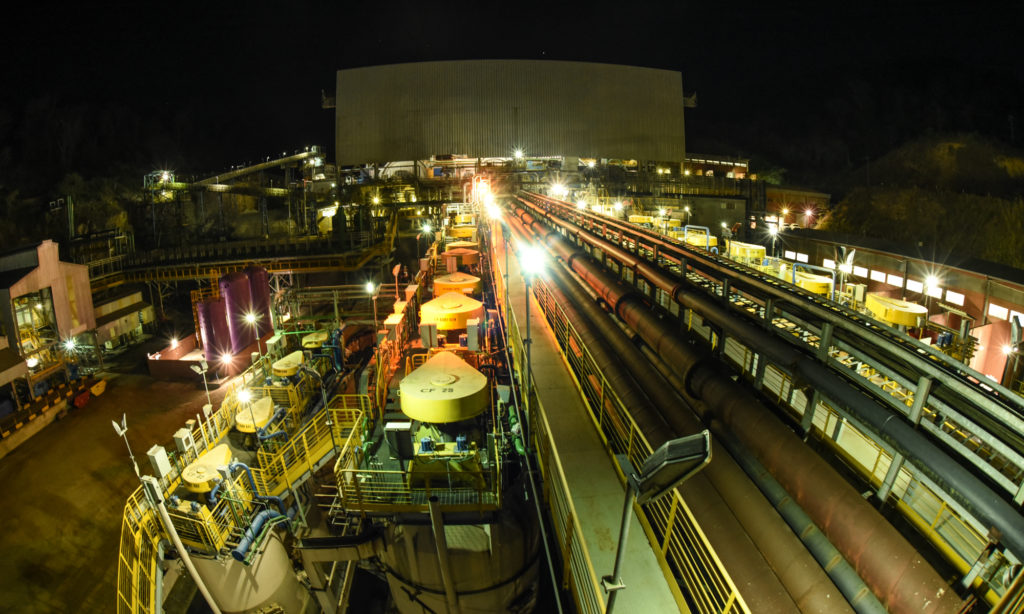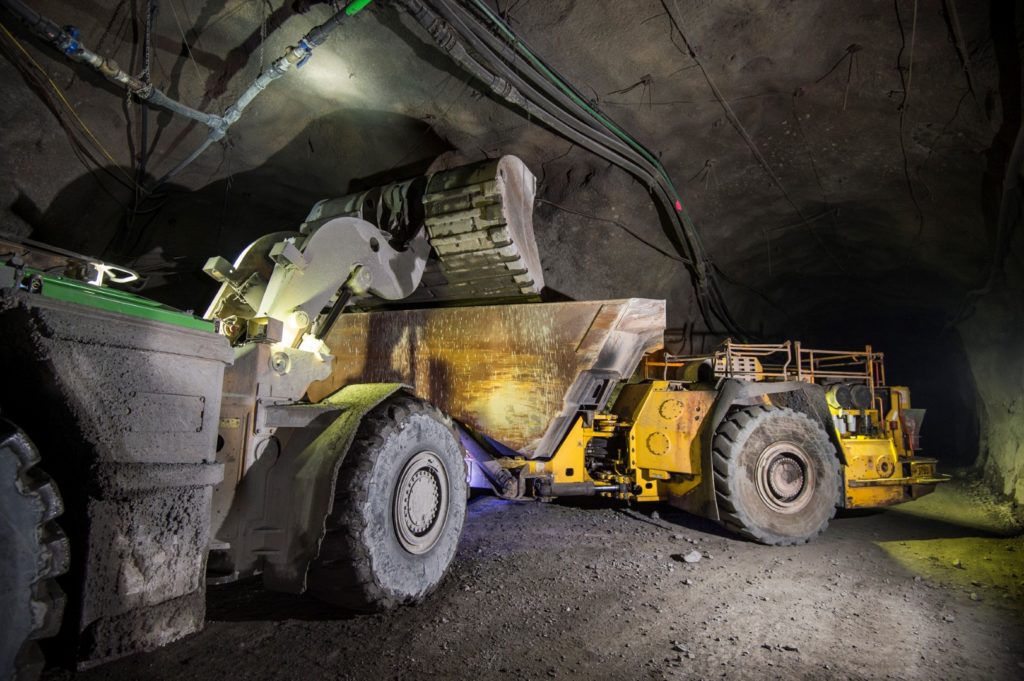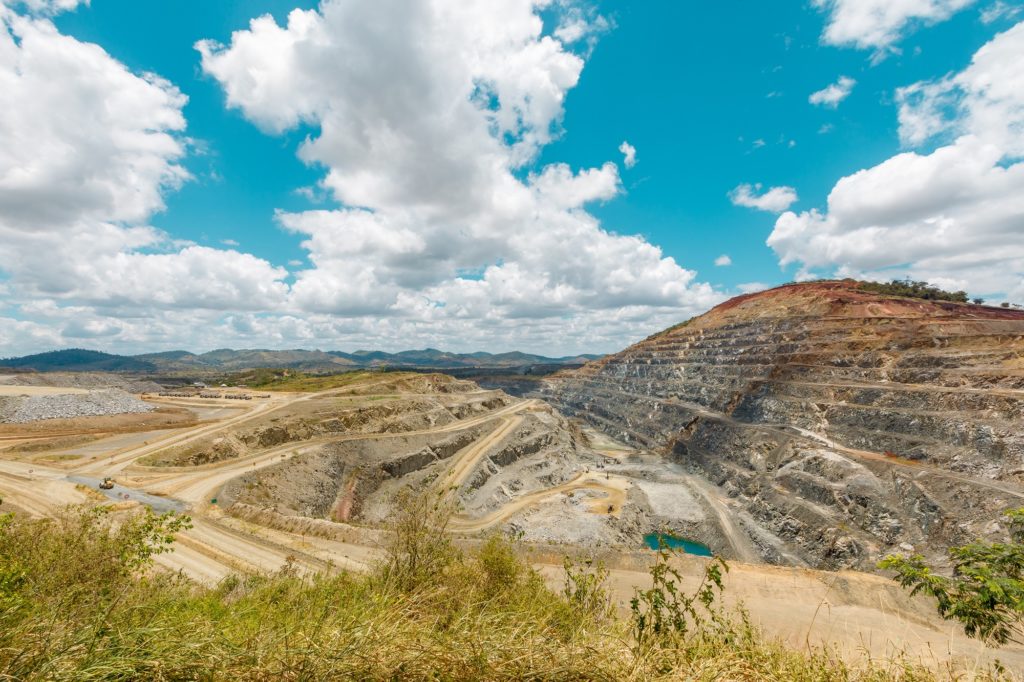At the height of the most recent nickel boom – when prices were over $20,000/t on the LME – the Santa Rita mine looked like a great option to gain exposure to the stainless steel raw material.
Mirabela Nickel, the mine owner, represented a pure-play nickel stock; Brazil, as a jurisdiction, was looked at favourably by investors; and the operation, itself, was one of the largest open-pit nickel sulphide mines in the world slated to produce 16,500 t/y of nickel sulphide in concentrate.
Gaining exposure to such a large, low grade asset is great when the underlying commodity price is tracking well, but, as has been shown time and again, it proves problematic when the price moves south.
Such a price deterioration came to pass in the years following the mine’s start up in 2009.
The asset, in north-eastern Brazil, was eventually placed on care and maintenance in the March quarter of 2016 as Mirabela Nickel declared bankruptcy. This was the same year the nickel price dipped below $10,000/t.
Fortunately for the local community and personnel that had invested much hope in the development of the $1 billion-plus mine, Appian Capital Advisory more recently took the view that there was a way forward for Santa Rita.
Picking up on an emerging trend for clean and green nickel sulphide concentrate from the electric vehicle and stationary storage market, plus the ability to re-engineer the operation and make it a much more robust asset, the company carried out a six-month due diligence process on Santa Rita.
This process led Appian to refine its understanding of the presence of nickel sulphides within the deposit, as opposed to the asset’s total contained nickel. With this understanding in hand, a more defensive and low-cost mine plan was developed to see the asset through nickel price peaks and troughs.
Appian ended up acquiring Santa Rita and setting up the Atlantic Nickel operating entity to enact these changes.
Having restarted open-pit mining just over a year ago, the asset is starting to pay back the faith Appian has placed in this plan.
“Our resource now focuses on the estimation of nickel sulphide within the deposit and benefits from additional drilling we’ve undertaken post-acquisition,” Adam Fisher, Principal, Appian Capital Advisory LLP, explained to IM. “The mine design we’ve developed extracts the deposit more selectively and also moves less waste, resulting in the low cost performance we’ve been able to achieve to date.”
In the first half of 2020, the company declared first quartile C1 cost performance of $3.17/lb ($6,989/t) nickel, net of by-products. This compares favourably with Mirabela Nickel’s $6.19/lb operating cost recorded in the September quarter of 2013.
“Among the operating changes we’ve implemented are the use of a smaller, locally procured, equipment fleet of 40 t trucks (Santa Rita previously used Caterpillar 777 90 t and 785 137 t payload trucks), the use of shorter benches – we’ve gone from 10 m down to, on average, 6 m – and tighter blasting patterns,” Fisher said.
All this work is being carried out by a Brazil-based consortium of contract miners.
“With smaller benches, tighter blasting patterns and smaller equipment fleets, we have more consistent control on the grade and fragmentation of the material that is fed to the crusher,” Fisher said.
The focus has gone beyond the near term, with more than 100,000 m of drilling executed in the underground resource area. The drilling was optimised for resource growth and classification confidence. The program was extremely successful and supported the declaration of the underground resource of 168 Mt at 0.59% NiS and 0.19% Cu. The 2020 drill programs continue to intersect similar widths and grades while stepping out from the declared resource, the company added.
The NI 43-101 technical report, released earlier this month, outlined a 34-year mine life for Santa Rita, with eight years of open-pit production, underpinned by proven and probable reserves of 50.6 Mt at 0.31% NiS, followed by 26 years of underground mining.
While still preliminary, this represented a very different approach to the previous Santa Rita owner.
“The last owners designed an open-pit mine with a 6:1 strip ratio and were planning to mine a lot deeper into the resource via open-pit methods,” Fisher said. “This was back in a very different nickel market when prices were greater than $10/Ib.
“All we did was find the optimal transition to bulk methods at depth to understand that it only makes sense to mine this as an open pit over eight years at a strip ratio that comes down to, on average, 2.7:1.”

Backing up this open-pit mine plan has been a 6.5 Mt/y plant, which, having started production in 2009, was completely refurbished and recommissioned in the second half of 2019 to align with the nickel sulphide recovery focus.
The plant consists of crushing, grinding, flotation, thickening and filtration unit operations to produce a saleable nickel sulphide concentrate. Flotation tailings are pumped to a tailings storage facility, while grinding is performed by a SAG mill, two ball mills and two pebble crushers. This is followed by a conditioning circuit and a flotation circuit, with the final concentrate thickened and pumped to storage tanks ready for filtration. Concentrate is filtered in a Larox (Metso Outotec) pressure filter. Following filtration, the final concentrate is trucked to the port of Ilhéus where it is loaded onto ships for transport to market.
Since the restart, more than five shipments have been made to the mine’s offtake partners.
“While the mine and plant are still ramping up, the open-pit operation is not far off from achieving the PEA estimates of being able to produce 20,000-25,000 t/y of contained nickel sulphide equivalent at a C1 cost of $2.97/Ib nickel,” Fisher said.
Beyond this, the company is looking to leverage innovation to create one of the largest and most efficient sub-level cave (SLC) operations in the world able to produce more of the highly sought after nickel sulphide product Santa Rita is becoming known for.
Caving in
“When carrying out the due diligence on Santa Rita, we knew all along that there was some good, thick intersections underground, with the orebody getting thicker at depth and the nickel sulphide grade improving,” Marcus Scholz, Head of Underground Mining at Appian Capital Advisory, told IM.
This was evident in the PEA, with underground mining inventory of 134.1 Mt grading 0.54% NiS and 0.17% Cu, comparing favourably – in terms of grade – with the proven and probable reserves of 50.6 Mt at 0.31% NiS and 0.11% Cu calculated for the eight-year open-pit operation.
“You’re looking at a massive orebody with moderate grades,” Scholz said. “Factoring that in, the lowest cost methods will generate the better margins in this case. With SLC having come a long way in the last 20 years in terms of practices, philosophies and the ability to control dilution through effective planning and modelling, plus the suitable geometry of the Santa Rita orebody, it was a good fit.”
This low-cost caving method allows the company to exploit more of the resource than other methods such as long-hole open stoping with backfill, plus fill the existing plant, Scholz explained.
Scholz was keen to point out that the company did not come to this conclusion on its own. It sought assistance from Power Geotechnical out of Australia, which has worked on other sub-level cave operations such as Carrapateena and Ernest Henry, when assessing its options.
Ernest Henry, operated by Glencore in Queensland, Australia, is a good analogue here. The Ernest Henry orebody is located at a similar depth below a pit and has a similar width and dip, but Santa Rita is about twice the size due to it being longer along strike, according to Scholz. It also comes with a similar 6 Mt/y profile.

The SLC mining layout in the PEA comprises 37 mining levels spaced at vertical intervals of 25 m. Each level is made up of parallel and evenly spaced drill drives from which production drilling and blasting occur. Once blasted, the mineralisation is loaded from the drill drives using LHDs and loaded into trucks for haulage to the surface during the initial ramp-up phase, and later to ore passes feeding an underground crushing station and conveying to surface via an inclined tunnel.
The PEA plans will have the company mine directly beneath the open pit to start with, hence the reason it expects to start up production in 2028 after open-pit mining has concluded.
The underground operation will start with two years of waste development ahead of ore production, followed by ore truck haulage over a three-year period, Scholz outlined. After this, the operation will transition to underground conveyor haulage, ramping up to 6 Mt/y capacity over the next four years.
Asked why the company was starting with truck haulage before moving to conveyors, Scholz said it was an economic decision.
“If we truck first, we can delay some of the underground spend in terms of getting the underground crusher in,” he said.
Over the life of the underground mine, the company plans to install two underground crushers, being fed with roughly equal amounts of ore. The first will serve the upper half of the deposit and the second crusher the lower half (circa-6 Mt/y each, staged as mining progresses deeper in the deposit).
The first crusher will be positioned about 650 m below surface, or 450 m below the ultimate depth of the open pit.
“This will take a bit of time to get down there and access it (in terms of mine development), so it makes sense to start haulage with trucks,” Scholz said.
Appian is looking to lease the 60 t trucks required for this stage of the operation, explaining that Atlantic Nickel will operate the 12 machines needed at the height of truck haulage, which is when mining rates hit the annualised 2.5 Mt/y mark.
The truck haulage route will be a short one, travelling some 200-300 m below surface to access material before going back above ground.
After the conveyor transition, the trucks are expected to be used in later years for waste haulage, which could amount to some 500,000 t/y of material, according to Scholz.
Automation and electrification transition
It is when the conveyor starts up that the automation element of Santa Rita Underground really kicks into gear.
The company assumed the use of automated LHDs, longhole drilling and jumbo development drilling in the PEA. This saw Epiroc, Caterpillar and Sandvik provide price inputs, with design layouts anticipating such equipment.
Scholz expanded on this for IM: “We foresee that loaders going from the SLC drawpoints to the ore passes would be automated, meanwhile, at the collection level at the bottom of ore passes, we would probably have up to three large automated loaders that transfer material to the crusher.”
Longhole drills would also be automated for the SLC, while the company plans to automate face drilling activities on the development jumbos it will use.
“I think in another eight years’ time when we start up production, a lot of this technology is going to be the norm in the industry,” Scholz said.
The current study assumes the use of a diesel-powered load and haul (initially) fleet, though electric vehicles could provide upside in future studies and further reduce energy costs, equipment maintenance costs and ventilation power costs, an Appian spokesperson recently told IM.
“Both tethered- and battery-powered machines will be looked at for specific applications within the mine, such as loading from drawpoints and feeding the underground crusher from the bottom of ore passes,” the spokesperson explained.
While much of the industry’s larger load and haul equipment has not yet made the commercial leap to battery power, the company is keen to pursue developments in the future as the technology became available, Scholz said.
The circularity of such a move will not be lost on Appian or Atlantic Nickel, knowing the nickel sulphide concentrate it will be offloading could end up in these battery-powered machines. In eight years, these end users will most likely be factoring such emissions-reducing technology into their raw material procurement choices.
For the time being, the company is focused on completing the underground drilling program at Santa Rita, which has, to date, shown much promise.
Fisher said every hole has intersected nickel sulphides to this point meaning the chances of a further underground resource upgrade in the early part of next year were high.
These figures will be factored into a prefeasibility study later in 2021, which will include more detailed geotechnical information on the SLC, as well as subsidence modelling, Scholz said.











